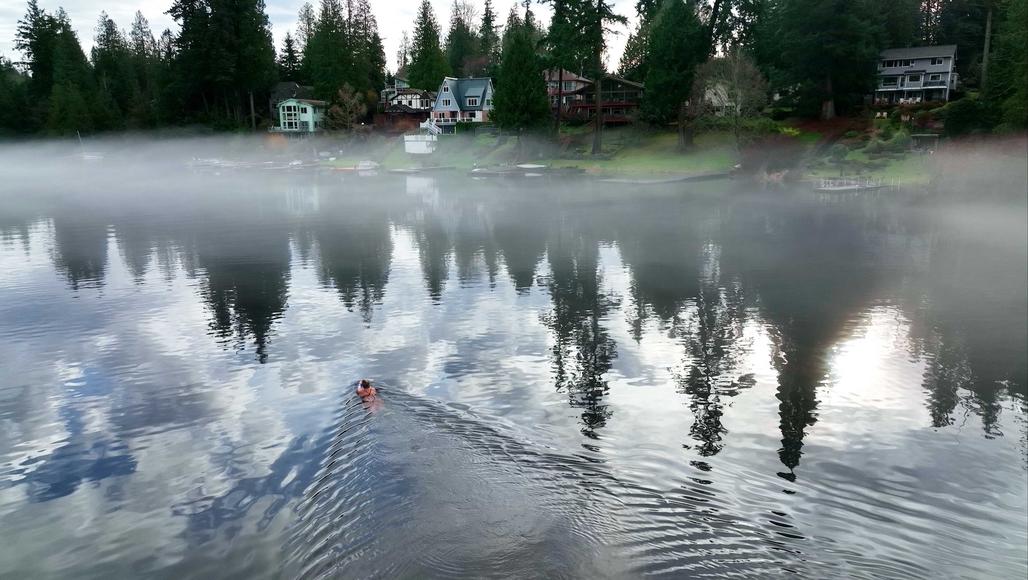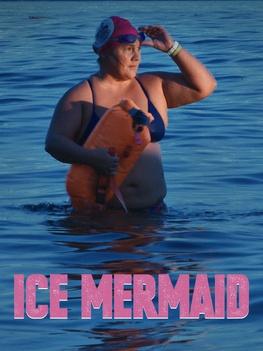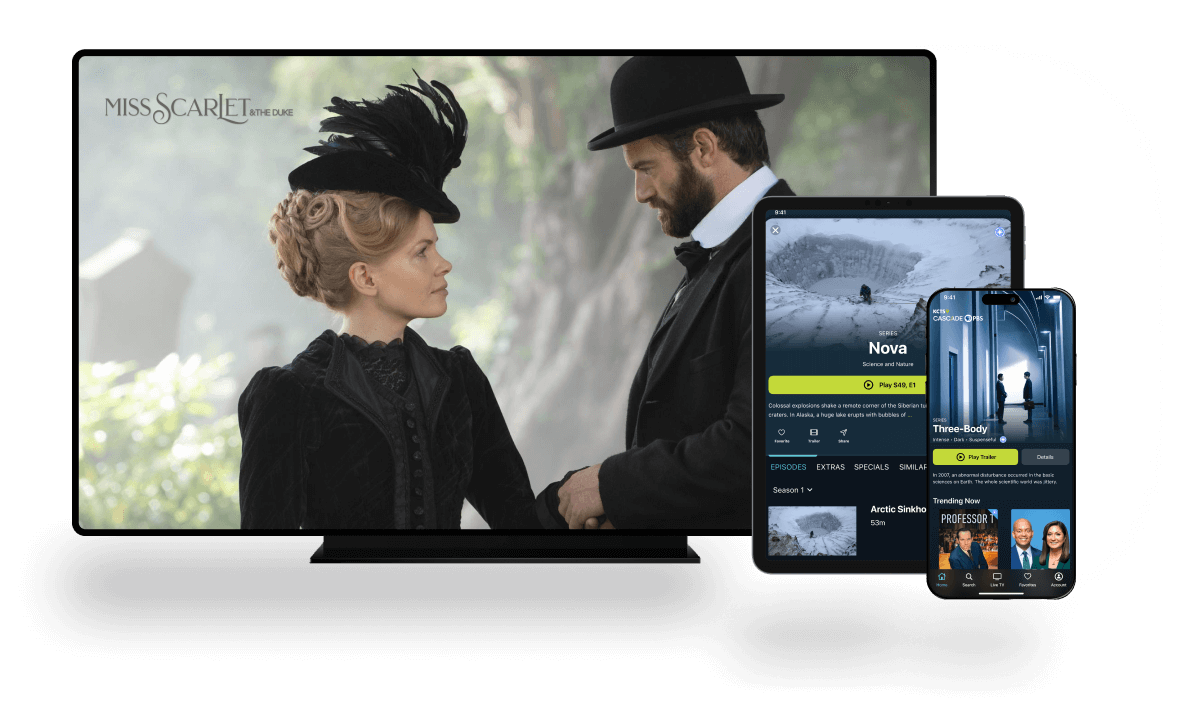
Melissa Kegler: Ice Mermaid
Would you ever consider going for a swim in Puget Sound – in February?
For many of us, the very thought of swimming in the Sound at any time of year brings a shiver to our spine. But for accomplished marathon swimmer Melissa Kegler, it’s an everyday occurrence. She can often be found swimming at many of the region’s beaches, including Golden Gardens, Fort Warden and Alki where she swims with the Notorious Alki Swimmers.
Melissa doesn’t just stick to the Sound, though. She’s hiked to remote lakes in the North Cascades as part of her training for an ice swim – a swim at a temperature of 41 F/5 C or below – and has done multiple English Channel swim crossings.
To coincide with the premiere of her documentary, Ice Mermaid: Cold Resolve, KCTS 9 sat down with the swimmer at her favorite Seattle beach to learn more about what goes into training for an ice swim, how she got into open water swimming and more.
This interview has been edited and condensed.
Tell us about yourself. Where did you grow up? When did you start swimming?
I grew up in Michigan and came to Seattle through a job transfer. I started swimming in Michigan when I was very young, because of the Great Lakes. Everyone starts swimming super young – we have many lakes, so water safety is important. But it was more recreational swimming; I didn’t start swimming competitively until I was in high school, which is late in the world of competitive swimming. But I didn’t discover open water swimming until I was in my mid-to-late 20s.
What was it like transitioning to open water swimming?
It was a bit of a struggle for all the classic reasons: you don’t have lane lines, you can’t see the bottom and you don’t have a focal point to follow. The transition was completely new, and it was a completely different sport. I was fortunate enough to have done a lot of swimming [in lakes] where you can’t see the bottom, you’re used to fish and seaweed. But getting into open water swimming for the fun of it, and the competitive spirit, it was difficult as an adult because it was starting something completely new.
What made you decide to try ice swimming?
The transition from open water swimming to ice swimming is a little easier here in the Pacific Northwest because it’s cold and the Sound doesn’t get above 58-59 degrees, even in the summer. Someone asked me if I was interested in trying it out, and I just thought, yeah, that sounds like a good idea.
What was the most challenging part of becoming an ice swimmer?
I probably didn’t realize the most challenging part until after I did my first ice swim. A lot of the lessons learned come after that first event, all the things you think you should have been told, the questions you didn’t know to ask … no amount of research is going to cover everything you need to know going into an event.
The actual swim, in my opinion, is not the most challenging part – it’s the icing on the cake, the last thing you do in a sequence of events for a swim. The most challenging part was learning from the mistakes I made and how to overcome those for future ice swims. You learn what you can improve on.
How do you keep your cool while open water swimming? Does anything scare you?
It’s the exact same thing as walking into your backyard and seeing a squirrel or bird – it’s just underwater. I’ve learned to find the beauty of what’s under the surface. I find a lot of joy in looking at the tracks in the sand and trying to figure out, is that a moon snail track? Is that a crab track?
What does make me nervous is swimming in new locations where there is not a lot of information on the water [for example, in alpine lakes]. So, you have to take time and evaluate the conditions. That type of stuff makes me a cautious swimmer versus a scared swimmer.
Can you talk about body positivity in the swimming community and how your story fosters that sense of belonging?
There is always a sense of, you’re not good enough because. You could be beautiful if you did this. You could be thinner if you do this. I’ve had people see me swimming at the gym and come up to me afterwards in the locker room, hand me a personal trainer card and say, “You could lose about 10 extra pounds, and it would make you a little faster. Here’s my card, come and reach out to me.” For that to happen, in that environment, to someone who is training at an elite level for different events? I don’t need your business card, maybe I don’t want to lose weight. That happens to everybody and I think it’s just not talked about a lot.
I started [open water swimming] in a wetsuit, but then I used a one piece, and I made a bikini pact with a couple of the other girls. We’d seen another girl wear a bikini and it looked so cool, to be on the beach in the winter and wear a bikini. We said, we’re going to do it. And it was terrifying that first day, to be on a beach in a bikini and wonder what everybody is going to think. And then you think, who’s on the beach in March? And the more I was in a two-piece, the more I felt how the water affected me, and affected my body. You could feel the water in a different way.
We’re not judging people for what their body looks like. We’re asking what they can do with their body. It becomes an educational moment, finding what works best for you in the water: how your body affects your swimming, your stroke, etc. We’re people that support each other, as they are, for who they are and what they can do with their body, no matter what they look like.
How would someone start open water swimming?
Get on social media and find the groups that are local to your area. We have a great community here at Alki, and in Western Washington in general. Whether you swim or not, you can hang out and watch others swim and network with the other swimmers. Don’t be afraid to ask questions. We love talking about swimming, and we want to tell you what we know.
Where is your favorite place to swim?
There’s a couple of different answers depending on why I am swimming. Training-wise, Alki Beach. My favorite place for pleasure swimming and getting the most out of sea life is the Straight of Juan de Fuca. It’s so rugged and wild, there’s so much up there that I don’t think swimmers have really experienced yet. I think everyone has a place they go to where you can’t describe it, but there’s something about it; like there’s some sort of spiritual element to it. For me, that’s the Straight of Juan de Fuca. My third favorite place is northern Michigan, my home state. Michigan has pristine, clear fresh water lakes, and my favorite beach in the world is in northern Michigan.
What was it like filming the documentary?
Making the film was the experience of a lifetime. I went to my favorite places in Washington, and had other people share it. I often swim alone, so filming with Dan and the crew, even though they weren’t swimming with me, it was like I had friends along and had somebody to do things with. As we filmed, I learned more about other people that went through similar experiences to my own, like the conflict that occurred with my physician telling me I was obese. It made me feel not alone on some of those days.
The documentary is something special; it’s a celebration of our open water swimming community. There’s something relatable in it for everybody, whether they’re a swimmer or not. I hope that this movie really embodies that sense of community and celebration for everybody. And if you’re not a swimmer, I hope you join!

Alli Rico
Alli Rico is the Social Media Editor for KCTS 9.








